Hybrid customer requirements rating method for customer-oriented product design using QFD
2015-04-11FangWangHuaLiAijunLiuandXiaoZhang
Fang Wang,Hua Li,Aijun Liu,and Xiao Zhang
School of Economics and Management,Xidian University,Xi’an 710071,China
Hybrid customer requirements rating method for customer-oriented product design using QFD
Fang Wang,Hua Li*,Aijun Liu,and Xiao Zhang
School of Economics and Management,Xidian University,Xi’an 710071,China
Quality function deployment(QFD)is a well-known customer-oriented product design methodology.Rating thenal importance of customer requirements(CRs)is really a very essential starting point in the implementation of QFD,since it largely affects the target setting value of design requirements.This paper aims to propose a novel method to deal with the relative importance ratings(RIRs)of CRs problem considering customers’diversied requirements and unknown information on customers’weights,which is an indispensable process for determining thenal importance ratings of CRs.First,a new concept of customer’s assessment structure is proposed according to the basic idea of grey relational analysis(GRA),and then a constrained nonlinear optimization model is constructed to describe the assessment information aggregation factors of CRs considering customers’personalized and diversied requirements.Furthermore,an immune particle swarm optimization(IPSO)algorithm is designed to solve the model,and the weight vector of customers is obtained. Finally,a car door design example is introduced to illustrate the novel hybrid GRA-IPSO method’s potential application in determining the RIRs of CRs.
quality function deployment(QFD),customer requirement(CR),grey relational analysis(GRA),mass customization (MC),immune particle swarm optimization(IPSO).
1.Introduction
Among the various customer-oriented product design tools,quality function deployment(QFD)that translates customer requirements(CRs)into design requirements (DRs)in the process of products or services development has received much attention from researchers[1–6].The applications of QFD have been expanded to wider engineeringelds such as quality engineering,concurrent engineering,and system engineering,and many corporations have realized signicant benets by using QFD,such as AT&T,Baxter Healthcare,Chrysler,DEC,Ford Motor, General Motors,Toyota group,IBM,ITT,NASA,and Xerox[7].
For the QFD process,the customer input is the key starting point,which may lead to inaccurate forecasts if it does not accurately reect what the customer expect for a product or service[2,8].Therefore,correctly rating thenal importance of CRs is an essential sub-process in QFD[2,6,9,10].Generally,thenal importance ratings (FIRs)of CRs are determined by combining the relative importance ratings(RIRs)and competitive priority ratings (CPRs)[2,11],and there are many methods related to both of them.Especially,because the RIR of CRs is a fundamental component of the FIRs of CRs,a number of methods have been developed,such as the point direct scoring method[11,12],analytic network process(ANP)[13],and analytic hierarchy process(AHP)[6,10,14–16].Based on the fact that customers’perception on the relative importance of CRs is usually imprecise and uncertain in nature, the fuzzy theory has been widely applied[9,11,17–21].
Chan et al.[11]obtained customers’importance assessments of CRs by the point direct scoring method,which were then transformedto fuzzynumbers.The RIRs of CRs were obtained by using fuzzy arithmetic and averaging the customers’assessments.Another method based on AHP or ANP requires customers to make pair-wise complete comparisons of all CRs,which may become very tedious and lead to the inconsistencies of customers in judgment [11,20].From this point of view,Nahm et al.[20]proposed the customer preference rating method,which allows customers to specify partial orderings of CRs.The adjacencymatrixandthedominancematrixwerebuilt,and the relative degrees of preference(RDP)were calculated. Then the RIRs of CRs were obtained under the condition that different customers have the same weight.As different customers may express their preference on the relative importance weights of CRs in different formats(such asprecise weights,interval weights,ordinal weights,ratio intervals,pair-wise comparison matrices and fuzzy preference relations),a nonlinear programming(NLP)approach is proposed to solve this problem[22].However,the NLP approach and some of the previous methods(e.g.AHP method[6],point direct scoring method and fuzzy methods[11],customer preference rating method[20])mainly focus on the RIRs of CRs problem with known information on customers’weights,and usually the same weight is assigned to different customers.
It is well known that,owing to the differences in information search experience,usage experience and ownership status of one product,the familiarity degrees of all customers to one product are always signicantly different[23].For example,customer 1,customer 2,and customer 3 are more familiar with the company’sproductthan customer 4,and then their assessments besides customer 4’s on CRs are very likely to be more consistent and objective than that of customer 4,so customer 1,customer 2,and customer 3 should have a higher weight than customer 4.Therefore,it is assumed that different customers having the same weight may lead to information loss or information distortion during the data processing.On the otherhand,due to time pressureand the QFD team’s or experts’limited expertise about the problem domain,sometimes the information on customers’weights in the process of determining the RIRs of CRs is completely unknown.In addition,mass customization(MC)which is now a dominant form of production in B2B(business-tobusiness),B2C(business-to-consumer),andhigh-endmarkets focuses on personalized products or services[24,25], andsomefamouscompanieshaveset upMCsystems,such as Dell,General Mills,and Nestl´e and Nike.However,to the best of our knowledge,relatively little attention has been drawn to the method of the RIRs of CRs considering customers’personalized and diversied requirements, which is not conducive to the extension and application of QFDfurther.Based ontheseideas,thispaperintendstodevelop a comprehensive and systematic new rating method to determine the RIRs of CRs considering both customers’diversied requirements and unknowninformationon customers’weights.
The grey system theory proposed by Deng has been widely applied in many scienticelds for studying the“small sample”,“poor information”systems with“partial information known,partial information unknown”[26–29].Some grey models(see GM(1,N),GM(1,1)or GM(0,N))have been introduced and implemented into QFD to determine the importance of technical measures or analyzedynamicCRs fromasystematicviewpoint[30,31]. Grey relational analysis(GRA)is one part of the grey system theory,and it has also been used to rank the technical measures in QFD[32,33].The process of determining the RIRs of CRs could be regarded as a grey system for three reasons:(i)it is impossible to include all CR candidates as CRs,as usually a great number of CR candidates would be obtained from the marketing surveys[20];(ii) customers’judgment on the importance of CRs is usually incomplete,vague and uncertain in nature[8,11,18,20]; (iii)the weight vectors of CRs and customers are generally unknown.Thus,a hybrid approach is proposed by taking advantages of GRA and the immune particle swarm optimization(IPSO)algorithm,named GRA-IPSO method,to deal with the“partial information known,partial information unknown”issue during determining the RIRs of CRs.
The rest of the paper is organized as follows.Section 2 introduces the main steps of QFD and GRA.Section 3 presents the details of the hybrid approach of GRA-IPSO. Section 4 provides a numerical example to illustrate how the procedure is used.Section 5 concludes the paper.
2.Preliminaries
2.1QFD
QFD was born in Japan in the late 1960s and early 1970s, and then rapidly spreading to the US in the 1980s and later to many other nations[7].QFD as a kind of multifunctional technology is able to effectively integrate the activities of the engineering design into the manufacturing process,andthemostcommonlyseenQFDconsistsoffour phases:Phase I translates CRs into DRs(also called technical measures);Phase II translates the important DRs into critical parts and parts characteristics;Phase III translates important parts characteristics into critical process operations;and Phase IV translates key process operations into day-to-day production requirements.Phase I which is also called house of quality(HOQ)usually includes nine steps as shown in Fig.1,and it is signicant in QFD[11].HOQ is based on customer inputs,and the process from the collection to thenal rating of CRs.Customer inputs consist of therst four steps of HOQ.These steps can be briey described as follows[11,20].
Step 1CRs(WHATs).Therst part of customerinputs is to collect customer needs and organize them as a set of CRs.Usually,it is determined through personal interviews and/or focus groups.
Step 2RIRs.Oncea set ofCRs is obtained,the RIRs of CRs should be determined(also called fundamental or basic importance ratings).Conventionally,the importance of CRs are assessed by using an L-point Likert scale such as 1–5,in which the number 5 represents the most important and 1 the least.More elaborate scales,such as the 9-point scale,the 1-to-10 scale and anchored scale,are also used [11,12].Mail/telephone surveys are often used to obtain this information.
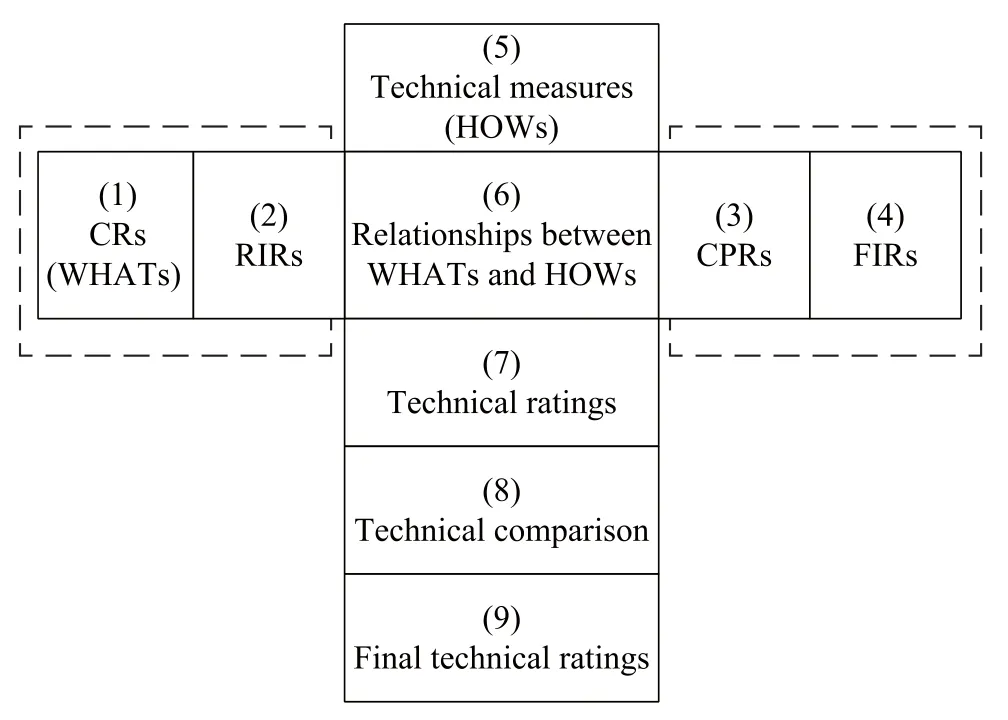
Fig.1 HOQ:broad steps
Step 3CPRs.After prioritizing CRs in terms of the relative importance in Step 2,the CPRs of CRs should be determined.In this block,a comparison is made between a company’sproduct/serviceand similar competitiveproducts/services on the market by customers.In current literature,various methods have been developed to determine the CPRs of CRs,including the use of improvement ratio [6],sales point[10],entropy and fuzzy method[11],and some other methods[2,20].
Step 4FIRs.The FIRs of CRs are determined by combining the RIRs in Step 2 and the CPRs in Step 3.The company would work on those CRs with highnal ratings which indicate high potential business benets.
2.2GRA
GRA provides a simple scheme to analyze the series relationships or the system behaviors,even if the given information is incomplete.The main advantages of GRA are simple in calculation and its results are based on the original data[32,34,35].The steps of GRA are as follows:
(i)Generate grey relational.
Translating all sequence into a comparability sequence is therst procedure of GRA,which is called grey relational generating[34]. Assume that both Xi=(xi(1),xi(2),...,xi(m),...,xi(M))and Xj= (xj(1),xj(2),...,xj(m),...,xj(M))are two sequences with the same length,and the following sequence operators can be used to process Xiand Xj[36].
Initialing operator:

Averaging operator:

Interval operator:

In addition,there are the reversing operator and the reciprocating operator.Xjcan also be processed according to(1)–(3).
Generally,the grey relational coefcient matrix can be constructed when the reference series are given;otherwise the self-grey relational coefcient matrix can be obtained.
(iii)Calculate grey relational coefcients.

where ξ(xgi(m),xgj(m))is the grey relational coefcient between xgi(m)and xgj(m),ρ(ρ∈[0,1])is the distinguish coefcient and ρ=0.5[35]and

(iv)Calculate grey relational grades.
The grey relational grade represents the level of correlation between Xiand Xj,and it can be calculated according to


3.The proposed hybrid priority rating method
Supposing that a company would like to implement the customer-oriented product design strategy by employing QFD,K customers and M CRs have been identied through an appropriate way(e.g.marketing surveys,focus groups or individual interviews,mail or telephone surveys,existing information).These K customers are denoted as X1,X2,...,Xk,...,XK,and M CRs denoted as Y1,Y2,...,Ym,...,YM,respectively.Because linguistic terms are usually used to assess an attribute’s importance,suchas‘veryunimportant’or‘medium’,fortheconvenience of analysis and calculation,the linguistic terms were often transferred to crisp numbers.Fig.2 shows a frequently used 9-point scale[11].

Fig.2 The 9-point scale
In the proposed hybrid method,Xk(k=1,2,...,K) is required to use the 9-points scale to assess Ym(m= 1,2,...,M),as shown in Fig.2.Let us denote the assessment of Xkon Ymas xk(m).Then the assessments of the relative importance of M CRs can be obtained.Therefore,how to rank all Ymaccording to xk(m)and take customers’diversied requirements into consideration when determining the weight vector of customers are two major problems to be solved in this paper.The overall procedure of the proposed hybrid GRA-IPSO method is shown in Fig.3.
Previous researchers used the graph theory to represent human’s preference structure with incomplete information [2,20].Therefore,according to the basic idea of GRA,a new concept of customer’s assessment structure(CAS)isrst dened to aggregate the assessing information of customers as a whole and reect the customers’personalized and diversied requirements.Then a self-grey relational coefcientmatrixis constructedbycalculatingthedistance among CASs,and a constrained nonlinear optimization model is developed following the principle of highlighting the customer demands’characteristics of diversication and personalization to get the assessment information aggregation factors of CRs.Moreover,an IPSO algorithm is developed to solve the model,and the grey relational grades are calculated.Finally,the weight vector of customers is determined according to the principle of group decision consistency,and the ranking order for all CRs can be easily obtained.
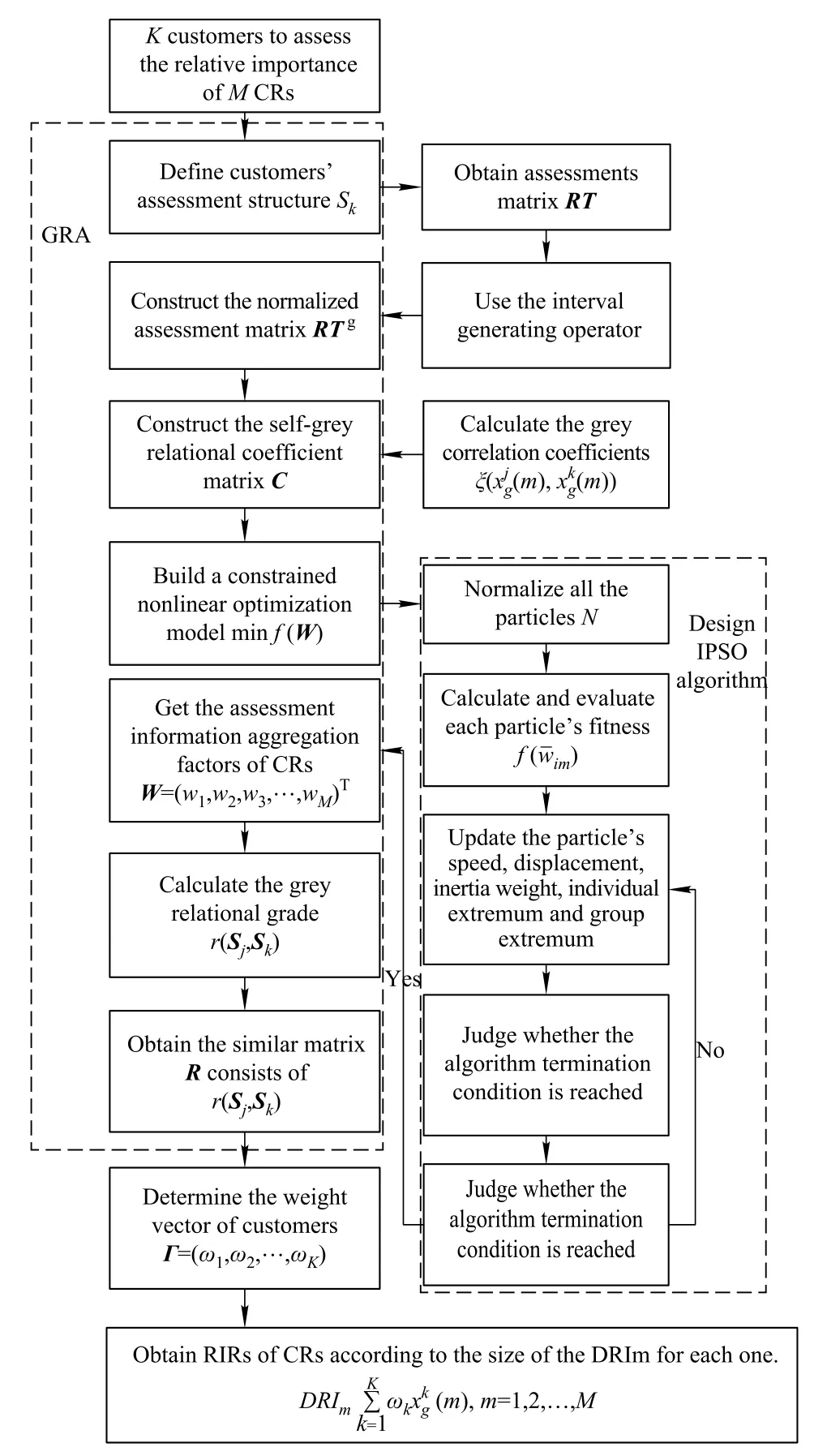
Fig.3 Overall procedure of the proposed hybrid method
3.1Defnition of CAS
Customer Xk’s assessment structure Skis expressed by Sk=(xk(1),xk(2),...,xk(m),...,xk(M)),xk(m)∈{1,2,3,...,9}.For example,suppose K=2 and M= 10,customer 1 and customer 2 assess the relative importance of 10 CRs using the 9-point scale.Then the assessment structures of customer 1 and customer 2 can be constructed as S1= (7,7,3,1,6,3,1,7,5,7),and S2=(4,6,1,5,7,5,3,5,6,2),respectively.Fig.4 shows the CASs of customer 1 and customer 2.
Based on all the CASs,it is easy to obtain the assessment matrix RT=[xk(m)]K×M.



Generally,customerdemandspresent the characteristics ofdiversicationandpersonalization,especiallyin the MC environment[24,25,37,38],which determines the CASs’diversity.In other words,different customers’assessment series of CRs can form a different kind of CASs.Thus, this processing method of original data has two outstanding advantages:it is convenient to aggregate the assessing information of the customer as a whole;it may clearly reect the personalized and diversied assessment structures of different customers.Especially,this treatment will help the hybrid GRA-IPSO method from the systematic view point achieve the overallcomparisonof all CASs to get the weight vector of customers.
3.2Construction of an optimization model considering customers’diversifed requirements
In order to establish a suitable model considering customers’personalized and diversied requirements,the GRA method is employed in this section.
(i)Construct the normalized decision matrix RTg= [xgk(m)]K×M.
Transform the relative importance assessments of all CRs into a comparability sequence by using the interval operator according to

where k=1,2,...,K;m=1,2,...,M.
Then the normalized assessment matrix RTg=can be obtained,where all assessment values for CRs are scaled into[0,1].Correspondingly,Skis converted to Sgk.
(ii)Construct the self-grey relational coefcient matrix
Considering that different customers have different CASs,it is difcult to choose which CAS can be used as the reference sequence.Thus the self-grey relational coefcient matrixis constructed.
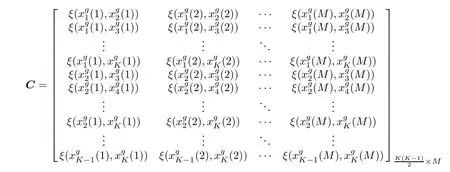
where ξ(xgj(m),xgk(m))is the grey relational coefcient between xgj(m)and xgk(m),and it can be calculated according to(4)and(5).
(iii)Build a constrained nonlinear optimization model.
Considering the characteristics of CRs[24,25,37,38], we would like to highlight those Ymthat obtain different assessment values during determining assessment information aggregation factors of CRs.Namely,the morediversied the assessment values of different customers on Ymare,the greater the aggregation factor wmof Ymis.For convenience of calculating,we denote the assessment information aggregation vector of CRs as W = (w1,w2,w3,...,wm,...,wM)T.Therefore,the following optimization model is built based on C:
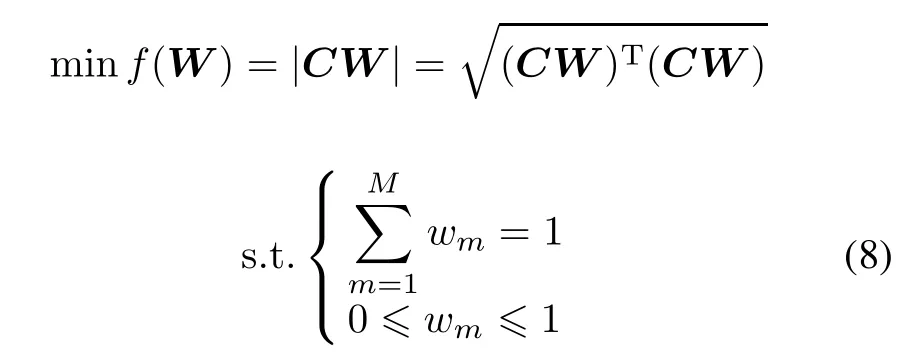
where wmis the variable for solving.
3.3Design of an IPSO algorithm to solve the modelThe model(8)is a typical constrained nonlinear optimization problem.Due to the complexity and unpredictability of nonlinear optimization,nding a general deterministic solution is very hard,which provides an opportunity for evolutionary algorithms.Particle swarm optimization (PSO)put forward by Eberhart and Kennedy is a new evolutionary computation algorithm[39].In order to improve the capability of PSO to escape from a local extremum, an IPSO algorithm is proposed.The steps of IPSO are as follows:
Step 1Initialize each particle.The IPSO algorithm denes each particle as a potential solution for a problem in a dimensional space.Assume that M is the search dimensionandN is thenumberofpopulationsize.Thefollowing vector represents particle n:

where n=1,2,...,N.In order to satisfy the constraints of the model(8),all the particles are normalized according to

Correspondingly,wnis converted to
Step 2Calculate and evaluate each particle’stnessand use each particle’stness value to initialize every population optimal position pn,and use the smallesttness particle within the initial population to initialize the global optimal position pg.Calculate the average and minimum of initial populationtness,and denote them as favgand fmin,respectively.
Step 3Update the particle’s speed and displacement according to

where vn(t)is the velocity,t is the current iteration times, w0is the inertia weight,c1and c2are positive coefcients, and r1and r2are random numbers obtained from a uniform random distribution function in the interval[0,1].
Step 4Update the inertia weight according to

wherewmaxandwminarethemaximumandminimumvalues of the inertia weight,and usually set wmax=0.9 and wmin=0.4.
Step 5If the currenttness value of the particle is better than the local optimal pn,then set pnas the currenttness,and select the optimal value from the local optimal as the globally optimal pg.
Step 6If the optimal solution cannot signicantly change after successive iteration times DS,it is necessary to execute the immunization operation.The pseudo code for this process is shown in Fig.5.

Fig.5 Pseudo code for the immune process
Step 7If the algorithm termination condition is satised,stop searching and output the optimal solution;else, go back to Step 3.
3.4Determinition of the weight vector of customers
It is easy to get the grey relational grade between Sgjand Sgkaccordingto(6),and let rjkdenote this relationship.In accordance with GRA,the larger rjkis,the closer Sgjand Sgkare.Therefore,the similar matrix R consists of rjkcan be constructed.


Then(4)can be used to calculate the DRIm,and all the CRmcan be ranked according to the size of the DRIm.

4.Illustrative example
In a classic QFD example[11]about car door design,10 CRs are identied.Different fromit which assumed the information on customers’weights is known during rating CRs,we assume here that the information is completely unknown.In addition,with the popularityof MC,it is necessary to take customers’diversity requirements into consideration during rating CRs.Therefore,the hybrid GRAIPSO method can be used here to solve the RIRs of CRs problem considering customers’diversied requirements and unknown information on customers’weights.
In the MC environment,an automobilecompanywishes to implement the customer-oriented car door design strategy by employing QFD.The company set up a QFD team to solve the problem.According to the company’s sales network and market survey,ve customers are selected and they are denoted as Xk(k=1,2,...,5).However, due to time pressure and the QFD team’s limited expertise about the problem domain,the information on customers’weights is completely unknown.By personal interviews and focus groups,90 initial CR candidates are collected, and using the cluster method,these 90 original needs are categorized into 10 major CRs.Suppose that these 10 major CRs represent the biggest concerns of customers,and Table 1 shows the 10 CRs[11].

Table 1 Ten CRs for a car door
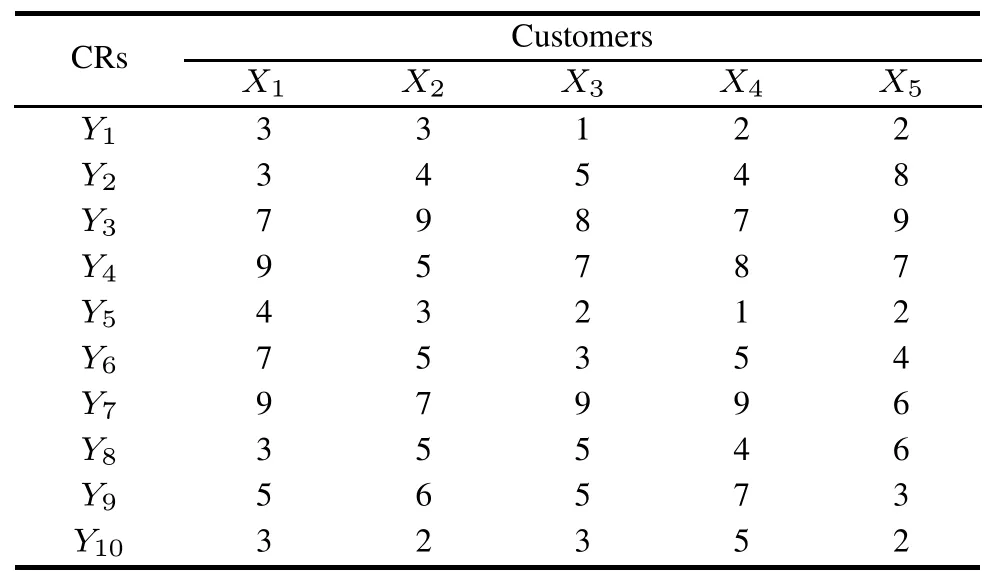
Table 2 Customers’assessments
The steps of the hybrid GRA-IPSO method are as follows:
Step 1Dene CAS.
Step 2Based on CASs,the assessment matrix RT= [xk(m)]5×10is obtained.

Step 3According to(7),the normalized assessment matrix RTg=[xgk(m)]5×10can be constructed.
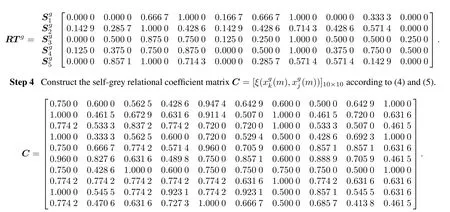
Step 5Build a constrained nonlinear optimization model considering customers’diversied requirements.
Based on the matrix C,the optimization model is developed to calculate the assessment information aggregation factors of CRs considering customers’personalized and diversied requirements.We denote the assessment information aggregation vector of CRs as W = (w1,w2,w3,w4,w5,w6,w7,w8,w9,w10)T.Then a constrained nonlinear optimization model is built as follows.

where wmis the variable for solving.
Step 6Use the IPSO algorithm to solve the model.
In our simulation,the IPSO algorithm is coded in Matlab 9.0.The following parameters are used in IPSO:the population size N=40,the search dimension M=10, the iteration times is 6 000,the iteration intervalDS=10, the immune substitution probability rp=0.6,the minimum distance between the particles Dmin=1e−015, wmax=0.9,wmin=0.4,c1=c2=2.By running the algorithm several times,the result of W=(0.013 8, 0.7480,0.0126,0.0310,0.0323,0.0117,0.0026,0.0086, 0.110 0,0.029 5)Tis selected.The iteration process is shown in Fig.6.
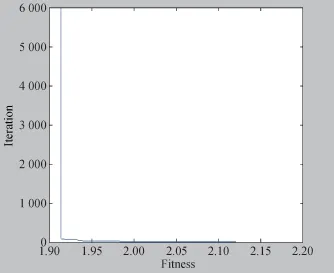
Fig.6 The iteration process of IPSO
Step 7Determine the weight vector of customers.
According to(6),the grey relational grade betweenand Sgkis calculated.Then,the similar matrix R can be constructed.

Based on the similar matrix R and according to(13), the weight vector of customers is obtained:

Step 8Determine the RIRs of CRs.
According to(14),the DRImcan be calculated.
DRI=(0.057 1,0.398 4,0.858 6,0.748 1,0.087 7, 0.424 9,0.863 0,0.378 1,0.474 1,0.159 2)
Then,the 10 CRs have the following ranking order:

where‘≻’means‘more important than’.
In order to compare with the situation without consideringthecustomer’sdiversiedrequirements,thecustomers’weights vector ΓUis calculated according to(6)and(13) when the assessment information aggregation factors of CRs have the same values.The results are shown in Table 3.It is easy to observe that whether considering the customer’s diversied requirements will highly affect the customers’weights.

Table 3 Comparison of different scenarios
To illuminate the difference between the proposed method and the previous method,we calculate separately by the crisp numbers method[11],the hybrid GRA-IPSO method with or without considering customers’diversied requirementsto getthe results,whichareshowninTable 4. It can be seen that the result from the method mentionedin thepaperis thesamewiththeexistingmethodwithoutconsidering the diversity of CRs.However,when we consider the diversity of CRs,the proposed method in this paper emphasizes on Y7more heavily.The reason may lie in the fact that different customers present diversity characteristics on Y7.Hence,in the MC environment,this company should take Y7as the core to design the car door.

Table 4 Comparison of different methods
5.Conclusions
Among the various customer-oriented approaches,QFD has been extensively used as an efcient design tool during product development.Conventionally,the CRs haverst to be identied and the RIRs of CRs have to be determined in the implementation of QFD.This paper proposes a hybridGRA-IPSO method to determine the RIRs of CRs considering both customers’diversied requirements and unknowninformationoncustomer’sweights inthe MC environment.
Comparedwith some existing methods,the main advantages of the proposed approach can be summarized as follows:
(i)The GRA-IPSO methodgivesthe decisionmakerone more choice in solving the RIRs of CRs problem under the“poor information”situation,especially when consideringcustomers’diversiedrequirementsandunknowninformation on customers’weights;
(ii)The GRA-IPSO method provides an objective and quantitative method to calculate the assessment information aggregation factors of CRs by combining the theoretical models and the articial intelligence algorithm,and there has been no attempt to take this situation into consideration so far.
[1]Z.L.Li,Q.S.Gao,D.L.Zhang.Product design on the basis of fuzzy quality function deployment.Journal of Systems Engineering and Electronics,2008,19(6):1165–1170.
[2]Y.E.Nahm.New competitive priority rating method of customer requirements for customer-oriented product design.International Journal of Precision Engineering and Manufacturing,2013,14(8):1377–1385.
[3]R.Y.Fung,J.Tang,P.Y.Tu,et al.Modeling of quality function deployment planning with resource allocation.Research in Engineering Design,2003,14(4):247–255.
[4]J.A.Carnevalli,P.C.Miguel.Review,analysis and classication of the literature on QFD—types of research,difculties and benets.International Journal of Production Economics, 2008,114(2):737–754.
[5]M.S.Cherif,H.Chabchoub,B.Aouni.Integrating customer’s preferences in the QFD planning process using a combined benchmarking and imprecise goal programming model.International Transactions in Operational Research,2010,17(1): 85–102.
[6]Y.L.Li,J.F.Tang,X.G.Luo.An ECI-based methodology for determining thenal importance ratings of customer requirements in MP product improvement.Expert Systems with Applications,2010,37(9):6240–6250.
[7]L.K.Chan,M.L.Wu.Quality function deployment:a literature review.European Journal of Operational Research,2002, 143(3):463–497.
[8]Y.Sireli,P.Kauffmann,E.Ozan.Integration of Kano’s model into QFD for multiple product design.IEEE Trans.on Engineering Management,2007,54(2):380–390.
[9]X.Lai,M.Xie,K.C.Tan,et al.Ranking of customer requirements in a competitive environment.Computers&Industrial Engineering,2008,54(2):202–214.
[10]Y.Li,J.Tang,X.Luo,et al.An integrated method of rough set, Kano’s model and AHPfor rating customer requirements’nal importance.Expert Systems with Applications,2009,36(3): 7045–7053.
[11]L.K.Chan,H.P.Kao,M.L.Wu.Ratingtheimportance ofcustomer needs in quality function deployment by fuzzy and entropy methods.International Journal of Production Research, 1999,37(1):2499–2518.
[13]E.E.Karsak,S.Sozer,S.E.Alptekin.Product planning in quality function deployment using a combined analytic network process and goal programming approach.Computers& Industrial Engineering,2003,44(1):171–190.
[14]Y.L.Li,J.F.Tang,K.S.Chin,et al.Estimating thenal priority ratings of engineering characteristics in mature-period product improvement by MDBA and AHP.International Journal of Production Economics,2011,131(2):575–586.
[15]Y.L.Li,K.S.Chin,X.G.Luo.Determining thenal priority ratings of customer requirements in product planning by MDBM and BSC.Expert Systems with Applications,2012, 39(1):1243–1255.
[16]M.R.Rahnama.Ranking and investigation of voice of customer index by applying AHP method in local management of tehran metropolis.Journal of Management and Sustainability, 2013,3(1):129–144.
[17]C.K.Kwong,H.Bai.A fuzzy AHP approach to the determination of importance weights of customer requirements in quality function deployment.Journal of Intelligent Manufacturing,2002,13(5):367–377.
[18]C.K.Kwong,H.Bai.Determining the importance weights for the customer requirements in QFD using a fuzzy AHP with an extent analysis approach.IIE Transactions,2003,35(7):619–626.
[19]G.B¨uy¨uk¨ozkan,T.Ertay,C.Kahraman,et al.Determining the importance weights for the design requirements in the house of quality using the fuzzy analytic network approach.International Journal of Intelligent Systems,2004,19(5):443–461.
[20]Y.E.Nahm,H.Ishikawa,M.Inoue.New rating methods to prioritize customer requirements in QFD with incomplete customer preferences.The International Journal of Advanced Manufacturing Technology,2013,65(9/12):1587–1604.
[21]E.K.Delice,Z.G¨ung¨or.Determining design requirements in QFD using fuzzy mixed-integer goal programming:applicationof adecision support system.International Journal ofProduction Research,2013,51(21):6378–6396.
[22]Y.M.Wang.Assessing the relative importance weights of customer requirements using multiple preference formats and nonlinear programming.International Journal of Production Research,2012,50(16):4414–4425.
[23]C.W.Park,V.P.Lessig.Familiarity and its impact on consumer decision biases and heuristics.Journal of Consumer Research,1981,8(2):223–231.
[24]P.R.Dean,D.Xue,Y.L.Tu.Prediction of manufacturing resource requirements from customer demands in masscustomisation production.International Journal of Production Research,2009,47(5):1245–1268.
[25]F.S.Fogliatto,G.J.da Silveira,D.Borenstein.The mass customization decade:an updated review of the literature.International Journal of Production Economics,2012,138(1):14–25.
[26]D.K.Ng.Grey system and grey relational model.ACM SIGICE Bulletin,1994,20(2):2–9.
[27]J.L.Deng.Control problems of grey systems.Systems&Control Letters,1982,1(5):288–294.
[28]S.F.Liu,J.Forrest.The current developing status on grey system theory.Journal of Grey System,2007,19(2):111–123.
[29]Q.X.Li,S.F.Liu,Y.Lin.Grey enterprise input–output analysis.Journal of Computational and Applied Mathematics,2012, 236(7):1862–1875.
[30]H.H.Wu.Applying grey model to prioritise technical measures in quality function deployment.International Journal of Advanced Manufacturing Technology,2006,29(11/12): 1278–1283.
[31]H.H.Wu,A.Y.H.Liao,P.C.Wang.Using grey theory in quality function deployment to analyse dynamic customer requirements.International Journal of Advanced Manufacturing Technology,2005,25(11/12):1241–1247.
[32]H.H.Wu.A comparative study of using grey relational analysis in multiple attribute decision making problems.Quality Engineering,2002,15(2):209–217.
[33]M.S.Yin.Fifteen years of grey system theory research:a historical review and bibliometric analysis.Expert Systems with Applications,2013,40(7):2767–2775.
[34]G.W.Wei.GRA method for multiple attribute decision making with incomplete weight information in intuitionistic fuzzy setting.Knowledge-Based Systems,2010,23(3):243–247.
[35]G.W.Wei.Grey relational analysis model for dynamic hybrid multiple attribute decision making.Knowledge-Based Systems,2011,24(5):672–679.
[36]S.F.Liu,Y.Lin.Grey systems theory and applications.New York:Springer Verlag,2010.
[37]H.Theil,R.Finke.The consumer’s demand for diversity.European Economic Review,1983,23(3):395–400.
[38]N.Franke,M.Schreier.Product uniqueness as a driver of cus-tomer utility in mass customization.Marketing Letters,2008, 19(2):93–107.
[39]X.Hu,R.Eberhart.Solving constrained nonlinear optimization problems with particle swarm optimization.Proc.of the 6th World Multiconference on Systemics,Cybernetics and Informatics,2002:203–206.
Biographies

Fang Wang was born in 1987.He received his B.S. degree from Northwest Agriculture and Forestry University,in 2009.He is a Ph.D.candidate in School of Economics and Management,Xidian University.His research interests include grey systems theory and its application,and decision analysis.
E-mail:wf.369.abc@163.com

Hua Li was born in 1963.He received his M.S. degree from Department of Mathematical,Shaanxi Normal University in 1991,and Ph.D.degree from Xidian University in 1999.Now he is a professor of management science and engineering in School of Economics and Management at Xidian University. His research interests are management science and industrial engineering.
E-mail:lihua@xidian.edu.cn

Aijun Liu was born in 1979.He received his B.S.degree from Chongqing University in 2004. Then he received his M.S.and Ph.D.degrees from Chongqing University in 2007 and 2011,respectively.Now he is a lecturer in Xidian University.His research interests are complex manufacturing system and intelligent algorithm.
E-mail:liuaijun@cqu.edu.cn

Xiao Zhang was born in 1985.She received her B.S.degree from Northeastern University,in 2007. Then she received her M.S.and Ph.D.degrees from Northeastern University in 2009 and 2012,respectively.Now she is a lecturer in Xidian University. Her research interests include decision theory and method,and operation management.
E-mail:zhangxiao.neu@163.com
10.1109/JSEE.2015.00061
Manuscript received March 07,2014.
*Corresponding author.
This work was supported by the Fundamental Research Funds for the Central Universities(K5051399035;BDY251412;JB150601)and the Soft Science Project of Shaanxi Province(2013KRZ25).
杂志排行
Journal of Systems Engineering and Electronics的其它文章
- Multi-channel differencing adaptive noise cancellation with multi-kernel method
- Combined algorithm of acquisition and anti-jamming based on SFT
- Modied sequential importance resamplinglter
- Immune particle swarm optimization of linear frequency modulation in acoustic communication
- Parameter estimation for rigid body after micro-Doppler removal based on L-statistics in the radar analysis
- Antenna geometry strategy with prior information for direction-nding MIMO radars
